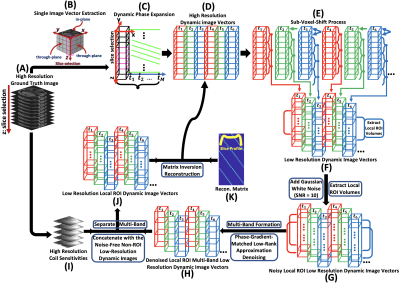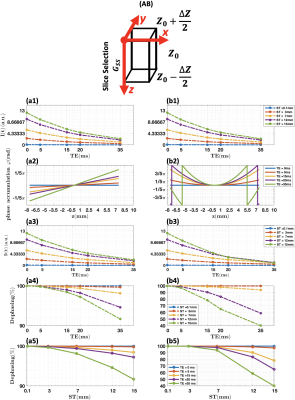Duohua Sun1, Jean-Philippe Galons2, Chidi Ugonna1, Silu Han1, and Nan-kuei Chen1
1Biomedical Engineering, The University of Arizona, Tucson, AZ, United States, 2Medical Imaging, The University of Arizona, Tucson, AZ, United States
1Biomedical Engineering, The University of Arizona, Tucson, AZ, United States, 2Medical Imaging, The University of Arizona, Tucson, AZ, United States
Phase information can be utilized to significantly reduce the susceptibility
artifact, benefiting applications relying on phase mapping.

Fig. 1. (A): High-resolution
ground truth image; (B): Single image
vector extraction; (C): Temporal phase
expansion; (E-F): Forming low-resolution dynamic images; (G): Adding Gaussian noise, extracting local ROI; (H): Forming a denoised local ROI multi-band-low-resolution dynamic
images; (I): Coil sensitivities; (J): Separating
multi-band and concatenating with the noise-free non-ROI low-resolution dynamic
images to form low-resolution local ROI dynamic images; (K): The reconstruction matrix.

Fig. 2. Simulation results on through-plane
susceptibility effect on a single voxel. (AB):
Demonstration of the geometry of single voxel; ((a1), (b1)): Signal intensity with T2* decay without the present
of susceptibility gradient; Linear (a2)
and nonlinear (b2) susceptibility
gradients along the slice selection direction; ((a3), (b3)): Signal intensity with both T2* decay and
susceptibility gradient; ((a4), (b4)): Dephasing
effect vs echo time; ((a5), (b5)): Dephasing
effect vs slice thickness.